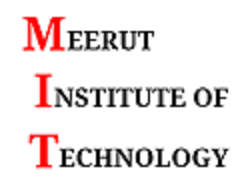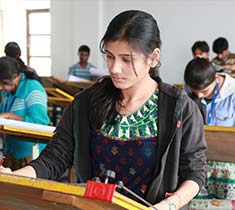|
13 |
REC 601 |
Microwave Engineering |
CO-1 |
To understand the concept of rectangular and circular waveguide and to determine its field components and their application in microwave circuits |
|
CO-2 |
To evaluate scattering parameter of various microwave components. |
|
CO-3 |
To analyze the limitation of conventional active devices and to design and analysis of various microwave tubes. |
|
including reflex klystron, Magnetron, Travelling wave tube, BWO and their application. |
|
CO-4 |
To design and analysis of solid state amplifier and oscillators. |
|
CO-5 |
To measure and analyze microwave power using test benches, frequency meter and VSWR meter. |
|
14 |
KEC 602 |
Control System |
CO-1 |
To understand basic concepts of a control system. |
|
CO-2 |
To develop the mathematical model of various physical systems. |
|
CO-3 |
To carry out the time domain analysis of first and higher order systems. |
|
CO-4 |
To evaluate the stability of linear control systems using Routh Hurwitz Criteria and Root Locus Technique. |
|
CO-5 |
To evaluate the stability of linear control systems using different frequency domain techniques like Nyquist criteria and Bode plots. |
|
15 |
KEC 051 |
Computer Architecture and Organization |
CO-1 |
To devise a structure from given components that exhibits a specified behavior and performs operations at minimum cost using either of combinational or sequential circuits. |
|
CO-2 |
To figure out the basic layout for designing a processor based on different formats. |
|
CO-3 |
To design data path at register level considering the speed up data processing. |
|
CO-4 |
To design a control unit for pipelined processors. |
|
CO-5 |
To design computer’s memory system. |
|
16 |
KEC 503 |
Digital Signal Processing |
CO-1 |
To understand the basic concepts and terminologies of digital signal processing and filter design. |
|
CO-2 |
To apply different transformation tools for the analysis of discrete time signals and systems. |
|
CO-3 |
To apply concepts of digital signal processing for finding various parameters and design of different circuits/systems. |
|
CO-4 |
To analyze different filters for digital signal processing. |
|
CO-5 |
To design different filter structures on the basic of different realization methods. |
|
17 |
REC 502 |
Principle of communication |
CO-1 |
To understand basic concepts and terminologies of communication systems. |
|
CO-2 |
To apply the principles of communication in determination of various parameters. |
|
CO-3 |
To analyze modulation, demodulation schemes and noise characteristics for analog communication systems. |
|
CO-4 |
To examine different coding and decoding techniques. |
|
CO-5 |
To evaluate performance of different analog communication systems in noisy environment. |
|
18 |
KEC 501 |
Integrated circuit |
CO-1 |
To understand the basic concepts of analog ICs and related circuits. |
|
CO-2 |
To understand the basic concepts of digital ICs and related circuits. |
|
CO-3 |
To analyze analog and digital circuits. |
|
CO-4 |
To design OP-AMP based analog linear integrated circuits. |
|
CO-5 |
To design OP-AMP based analog non-linear integrated circuits. |
|
19 |
RAS 501 |
Managerial economics |
CO-1 |
To understand the concept of managerial economics, difference between micro and macro economics. |
|
CO-2 |
To evaluate demand of product and kind of elastic will effect to demand. |
|
CO-3 |
To judge what kind of elasticity of supply and kinds of cost |
|
CO-4 |
To analyze attain equilibrium in monopoly in long run. |
|
CO-5 |
To evaluate various conditions of phases of Business Cycle. |
|
20 |
RCS 406 |
Data Structure & Algorithms |
CO-1 |
To understand and formulate the concepts of arrays and linked list. |
|
CO-2 |
To apply the concepts of Stack, Queue and formulate the solution using recursion in solving various problems. |
|
CO-3 |
To design and apply tree concepts for solving computational problems. |
|
CO-4 |
To analyze and compare the various path searching algorithms using the concepts of graph. |
|
CO-5 |
To summarize and evaluate searching, sorting and Hashing techniques using array. |
|
21 |
REC 403 |
Electronic Measurement & Instrumentation |
CO-1 |
To understand the fundamentals, derived units, and various standards, different types of errors, construction and working of different measuring instruments. |
|
CO-2 |
To describe the working principles of Digital equipments like transistor voltmeter circuit, ac electronic voltmeter, digital voltmeter circuit, working principle of Digital multimeter (DMM), digital frequency meter (DFM). |
|
CO-3 |
To apply the concepts to measure parameters passive components using bridges like Ammeter & voltmeter methods of resistance measurements, construction and working of different AC and DC bridges and its applications. |
|
CO-4 |
To understand the working of various types of oscilloscope like dual trace oscilloscope, CRO Probes, delay time based oscilloscope, Sampling oscilloscope, digital storage oscilloscope (DSO) & study its applications. |
|
CO-5 |
To calibrate the instruments by different methods & to study recorder & plotters. |
|
22 |
REC 402 |
Electromagnetic Field Theory |
CO-1 |
To apply vector calculus to static electric-magnetic fields in different engineering situations. |
|
CO-2 |
To analyze Maxwell’s equation in different forms (differential and integral) and apply them to diverse engineering problems. |
|
CO-3 |
To examine the phenomena of wave propagation in different media and its interfaces and in applications of microwave engineering. |
|
CO-4 |
To analyze the nature of electromagnetic wave propagation in transmission line which are used in communication. |
|
CO-5 |
To design impedance matching network to overcome signal reflection using graphical tool like Smith Chart. |
|
23 |
REC 401 |
Microprocessors & Microcontrollers |
CO-1 |
To understand the architecture of 8085 microprocessor and related terminologies |
|
CO-2 |
To understand the architecture of MSP430, basics of interfacing, serial communication and related terminologies |
|
CO-3 |
To understand the ALP of 8085. |
|
CO-4 |
To understand the ALP of MSP 4305. |
|
CO-5 |
To apply the knowledge of ALP for solving different problems using 8085. |
|
24 |
KVE 301 |
Universal Human Values & Professional Ethic |
CO-1 |
To understand about the need of value education and harmony in self, family, society and nature. |
|
CO-2 |
To apply the understanding of value education to ensure harmony at all the four levels of living. |
|
CO-3 |
To analyze about self, feelings in relationship, society and relevance of nature. |
|
CO-4 |
To evaluate their participation at all the four levels of living. |
|
CO-5 |
To improve their emotional, social and professional competence. |
|
25 |
ROE 041 |
Introduction to Soft Computing |
CO-1 |
To understand the basic concept of ANN. |
|
CO-2 |
To understand different ANN architectures and their algorithm. |
|
CO-3 |
To analyze various neural network models for the determination of various parameters. |
|
CO-4 |
To apply the concept of ANN for solving different problems. |
|
CO-5 |
To understand the concept of Fuzzy logic and its terminologies. |
|
26 |
KEC 403 |
Signals System |
CO-1 |
To understand the concept of continuous time and discrete time signals / Systems. |
|
CO-2 |
To understand the behavior of continuous time and discrete time signals / systems. |
|
CO-3 |
To analyze the behavior of continuous time and discrete time systems. |
|
CO-4 |
To analyze signals in complex frequency domain. |
|
CO-5 |
To understand Sampling theorem and its implications. |
|
27 |
KEC 301 |
Electronic Devices |
CO-1 |
To understand the phenomenon of charge carriers and energy bands in semiconductors and solid state devices. |
|
CO-2 |
To describe the characteristics of the p-n junction diode and some optoelectronic devices and their application in electronic circuits. |
|
CO-3 |
To explain the structure and characteristics of MOSFETs and to analyze the DC bias circuits, small-signal AC circuits with emphasis on single stage MOSFET amplifiers. |
|
CO-4 |
To examine the structure and characteristics of BJT and to analyze the DC bias circuits, small-signal AC circuits with emphasis on single stage BJT amplifiers. |
|
CO-5 |
To understand the various feedback topologies in electronic circuits and basic principle of oscillation in various sinusoidal oscillators. |
|
28 |
REC 301 |
Digital Logic Design |
CO-1 |
To convert different type of codes and number systems which are used in digital communication and computer systems. |
|
CO-2 |
To understand, analyze, and design combinational logic circuits and their various applications also. |
|
CO-3 |
To understand, analyze, and design Synchronous Sequential logic circuits and their various applications also. |
|
CO-4 |
To understand, analyze, and design Synchronous Sequential logic circuits and their various applications also. |
|
CO-5 |
To understand different types of Memory System and Logic families. |
|
29 |
KEC 303 |
Network Analysis and Synthesis |
CO-1 |
To apply mesh & nodal analysis to complex circuits and express them using Thevenin’s and Norton’s equivalent forms. |
|
CO-2 |
To evaluate the performance of RL, RC, and RLC circuits by the application of Laplace transform. |
|
CO-3 |
to apply use graph theory in solving networks. |
|
CO-4 |
To analyze the given network using different two port network parameters. |
|
CO-5 |
To determine the response of a network using network functions & synthesize network functions. |
|
30 |
RAS 302 |
Environment & Ecology |
CO-1 |
To understand and discuss the basics aspects associated with structure and function of ecological systems existing around us. |
|
CO-2 |
To identify and evaluate attitudes, skill, participation and services needed to contribute to a healthful national and global environment. |
|
CO-3 |
To analyze the impact of human an ever increasing human population and pollution on the biosphere, social, economic, use and conservation of natural resources. |
|
CO-4 |
To write and communicate effectively about environmental issues and can create environmental awareness among society. |
|
31 |
RAS 301 |
Mathematics-III |
CO-1 |
To explain the fundamentals of computer, number system & make use of algorithm, flowchart to solve complex problems. |
|
CO-2 |
To apply basic concept of c language to develop simple programs & identify type of error while compilation & execution. |
|
CO-3 |
To classify the use of different control statements & divide larger program in to modules while writing complex C programs. |
|
CO-4 |
To select the appropriate derived data type & determine the role of pointer, preprocessor & various string handling library functions. |
|
CO-5 |
To build small software project using files handling & solve problem using dynamic memory allocation technique. |
|
32 |
REC 752 |
Electronics Circuit Design Lab |
CO-1 |
To apply knowledge for selection of topics and explanation of overall circuit components/ functionalities. |
|
CO-2 |
To use modern it tools for simulation of circuits |
|
CO-3 |
Analyze the output of circuit obtained from simulated and hardware design. |
|
CO-4 |
To communicate effectively the circuit and its functionality. |
|
CO-5 |
To write effectively a technical contents of the circuit and corresponding description. |
|
33 |
REC 075 |
Optical Communication Lab |
CO-1 |
To understand and set up fiber optic analog link. |
|
CO-2 |
To understand and set up fiber optic digital link. |
|
CO-3 |
To understand and measure numerical aperture of optical fiber. |
|
CO-4 |
To understand and carry out Time Division Multiplexing of signals using optical fiber. |
|
CO-5 |
To understand and perform Manchester coding/decoding technique |
|
34 |
RIC-651 |
Microcontrollers For Embedded Systems Lab |
CO-1 |
To understand features of 8051 related to GPIO, ADC, DAC and Interrupts. |
|
CO-2 |
To implement features of MSP 430 related to GPIO, ADC, PWM, Timers and Interrupts. |
|
CO-3 |
To implement GPIO, ADC and Interrupts features with KEIL on 8051 micro computer kits. |
|
CO-4 |
To implement GPIO, ADC, PWM, Timer and Interrupts on MSP 430 for controlling peripherals. |
|
CO-5 |
To apply serial communication protocols on MSP 430 |
|
35 |
KEC 652 |
Control System Lab |
CO-1 |
To understand control Tool box in MATLAB. |
|
CO-2 |
To determine various mathematical operations using MATLAB. |
|
CO-3 |
To analyze a system in time domain using MATLAB. |
|
CO-4 |
To analyze a system in frequency domain using MATLAB |
|
CO-5 |
To determine the State Space representation of the given transfer function. |
|
36 |
REC 652 |
Communication lab -II |
CO-1 |
To plot a triangular and square wave using Fundamental frequency and its harmonics. |
|
CO-2 |
To understand various baseband digital modulation and demodulation techniques such as PCM and Delta Modulation. |
|
CO-3 |
To understand the line coding fundamentals i.e. coding and decoding of NRZ and Manchester formats. |
|
CO-4 |
To understand various pass band digital modulation and demodulation techniques such as ASK, FSK & PSK. |
|
CO-5 |
To understand and perform QPSK, DPSK, 8PSK and 16PSK Techniques and convolutional coding using MATLAB. |
|
37 |
REC 651 |
Microwave Engineering Lab |
CO-1 |
To understand the characteristics Klystron tube as microwave source. |
|
CO-2 |
To determine the frequency and wave length of rectangular waveguide. |
|
CO-3 |
To measure the reflection coefficient and VSWR of microwave signal. |
|
CO-4 |
To analyze V-I characteristics of Gunn diode. |
|
CO-5 |
To analyze microwave components such as Circulator/Isolator. |
|
38 |
REC 554 |
Cad of Electronics -I |
CO-1 |
To learn about Orcad/ P-spice software and analysis Transient and DC parameters of BJT inverter and NMOS inverter using step input and pulse input. |
|
CO-2 |
To acquire knowledge about CMOS technology and analysis of Transient and DC parameters of CMOS inverter using step input and pulse input and NOR gate inverter. |
|
CO-3 |
To learn about design and Simulation of NAND gate and Differential Amplifier (with Resistive Load, Current Source Biasing). |
|
CO-4 |
To analyze frequency response of Common Source amplifiers and source Follower amplifiers. |
|
CO-5 |
To analyze frequency response of Cascade amplifiers and Differential amplifiers. |
|
39 |
KEC 553 |
Digital Signal Processing Lab |
CO-1 |
To study about DSP Processors and architecture of TMS320C6713 DSP processor and Code Composer Studio. |
|
CO-2 |
To plot basic signals using MATLAB. |
|
CO-3 |
To apply CCS in matrix manipulations. |
|
CO-4 |
To calculate 4 point discrete Fourier analysis using MATLAB. |
|
CO-5 |
To implement 8 point FFT algorithm using MATLAB. |
|
40 |
REC 552 |
Communication Lab – I |
CO-1 |
To understand amplitude modulation techniques and the process of demodulation. |
|
CO-2 |
To understand the different types of Pulse modulation and their reconstruction. |
|
CO-3 |
To understand communication between transmitter and receiver and validate/ study different the receiver parameters. |
|
CO-4 |
To understand frequency modulation techniques, PAM, PWM, PPM, PCM and the process of modulation and demodulation. |
|
CO-5 |
To design and implement an FM radio receiver in 88-108 MHz. |
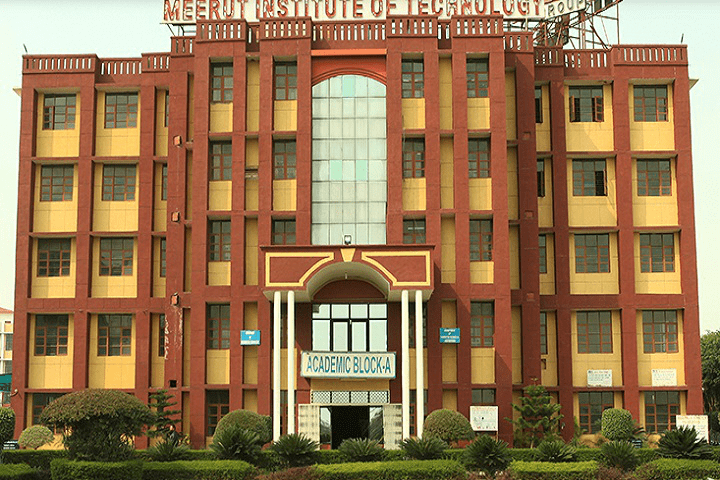
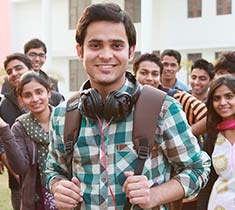
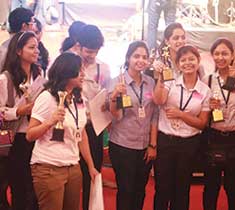
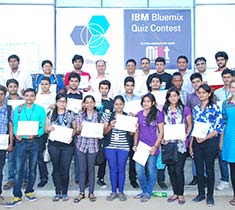
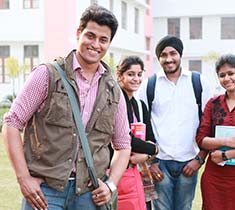


.png)



